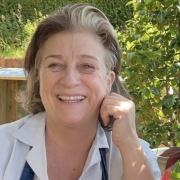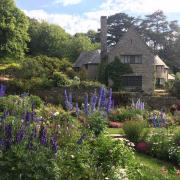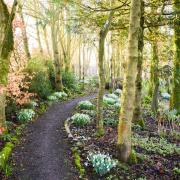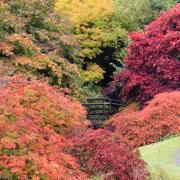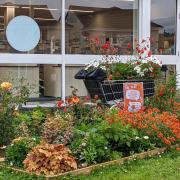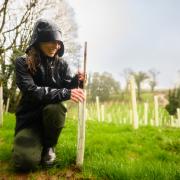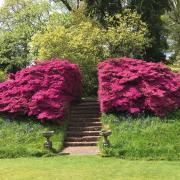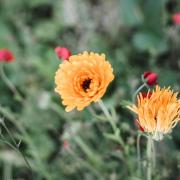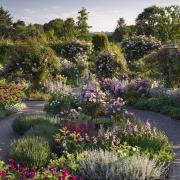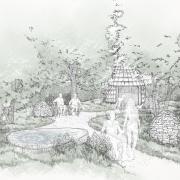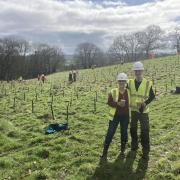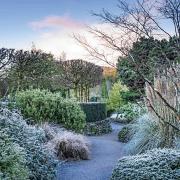Pig’s nose, Pendragon and Sack of Sugar...RHS Garden Rosemoor is planting a new heritage orchard featuring these and around 40 other of the county’s unique apple varieties, writes Catherine Courtenay

Anyone familiar with the Royal Horticultural Society’s Rosemoor garden at Torrington will know the sloping grass bank which lies beyond the formal areas on the approach to the vegetable garden. This space is currently undergoing a major transformation, one which will take time to come to maturity but which will be a legacy for generations to come.
There are around 70 known varieties of apple found and grown in Devon and 45 of the most threatened, a range of eaters, cookers and cider apples, will be planted on the site. It’s the result of a joint project between the RHS, the South West Fruit Group and Orchards Live, a north Devon-based charity set up to protect and promote Devon’s orchards and apples.
Rosemoor curator Jonathan Webster was initially approached by members of Orchards Live who had been inspired by a heritage, or ‘mother’ orchard of West Country apples they’d seen at Cotehele, the National Trust property in Cornwall. The group had been looking for a site for a similar orchard of Devon varieties for many years. Although lots of sites were possible, they felt it needed to be somewhere that would be guaranteed protection for the future, hence why they approached the RHS.
There was already a strong link with Rosemoor, going back to the first Apple Day more than 20 years ago, says Orchards Live member Jane Pay. Apple Day is a hugely successful annual event where, as well as showing off the many varieties, experts identify apples brought in by members of the public.
“People are intrigued; they have no idea there is such a wide variety and they’ll ask where you can buy them,” says the group’s chairman Tattwa Gyani. With ever increasing numbers coming to Apple Day, it seemed the right time for a Devon orchard she adds. “So many people are replanting orchards and wanting local varieties.”
Identifying and selecting the apples was not easy, with many varieties not on the official register, and discrepancies such as similar versions with different names. The work was done with the help of, among others, Kevin Croucher of Thornhayes Nursery near Cullompton and Apple Day expert Liz Copus.
“The history side of it has been fascinating,” says Jane. “Seeing how far these apples go back.”
Her own interest began when she moved to a house in Chulmleigh which came with an orchard.
“Even before we’d moved in my husband was looking up unusual apples to add in,” she says. A local farmer pointed out some of the different varieties and shortly afterwards Jane encountered Michael Gee, the founder of Orchards’s Live - and she was hooked.
Since the 1960s two thirds of the country’s orchards have been lost, along with local knowledge. At one time, people living in the countryside would be familiar with their local apples. Jane recalls that all the farmers around her would refer to the Listener apple. “It tastes like sweet cotton wool,” she was told. Another, Johny Voun, was a name everyone knew in North Devon.
For Tattwa it was a particular tree that sparked her interest in orchards.
“I wanted to move house and had an old tree in the garden which had been grown from a pip. It was a fantastic cooker but the only way to keep it was to graft it, so I went on a course to lean how.”
To ensure a correct copy of a particular variety, apple trees must be grown from grafts where a sprig from the tree is bound to a cut section of a rootstock tree; simply planting pips won’t give you the same tree. It’s a science that got Tattwa hooked, and after having her tree tested and proved unique she got it registered under the name of the local maths teacher who’d planted the original pip - Bill Grant’s Pippin.
All the apples for the Rosemoor orchard have been genetically tested – unless tested they won’t be recognised as a named variety. Some discrepancies have occurred where apples may be the same genetically but still have different fruits, rather like when a plant is listed as a “sport” .
Planning began in January last year. All the trees were grafted on to a new and robust rootstock and three of each variety were grown; two to be planted with a remainder to act as a stand-in. Drainage was put into the site’s heavy clay soil and the holes prepared for the young whips. Unusually, the planting design is not the familiar orchard grid, but small clumps of trees.
“I wanted it to be different,” says a delighted Jon. “We’ll have paths swinging around the trees with a meadow to bring out the pollinators.” The scheme, with taller cider apple trees and smaller eaters and cookers, will provide swathes of different levels of blossom, viewable from below and above, due to the sloping site.
“The diversity, the colour, shapes and sizes of these different apples, it’s a great resource,” says Jon. “These are rare varieties and if we can encourage people to grow them, then they will come off the endangered list.”
Tattwa and Jane pick their favourites
Johnny Voun: a lovely purple red apple
No Pip: a cooker with no pips!
Twenty Pip: found in Clyst Honiton in the 1980s
Hangy Down: a cider apple which really does hang down
Listener: favourite of North Devon farmers
Hollow core: ‘we’re waiting to see what it looks like’
Tidecombe Seedling: a fabulous eating apple from Arlington
Spotted Dick: ‘we love the name!’
And Jon’s fave?
Pig’s Nose: ‘An apple I have to see!’




